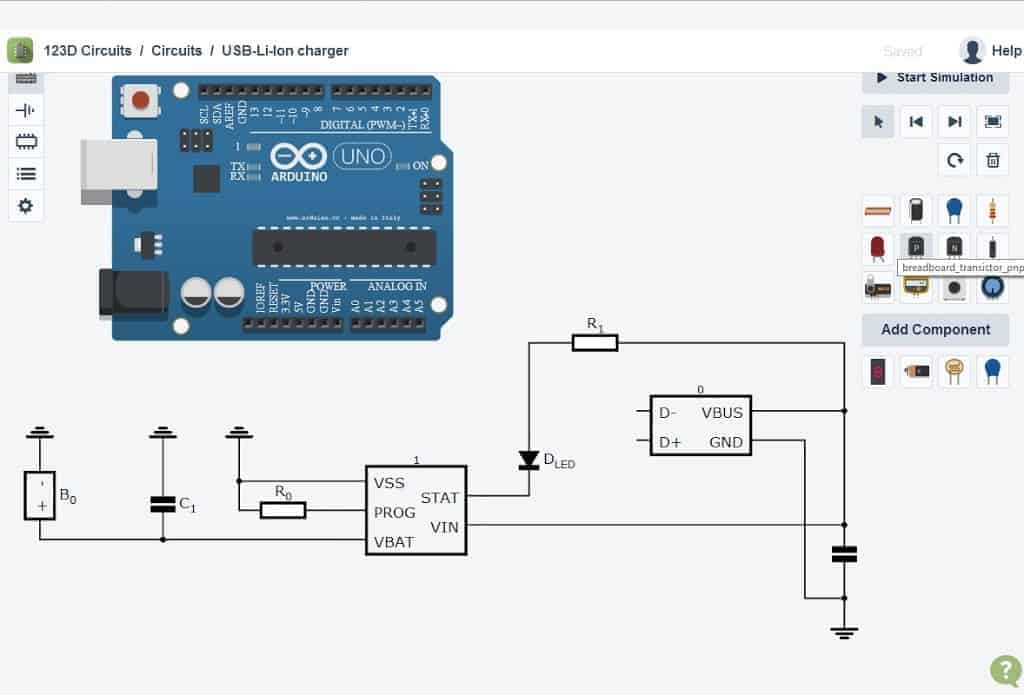Breadboard Simulator Free

Breadboard Circuit Simulator Free

Electronic circuit simulator for STEM works online, Simulate and troubleshoot broken circuits in a rich simulation environment, easy to learn. Download Virtual Breadboard for Windows 10 for Windows to virtual Breadboard (VBB) is a design and learning tool for creating intelligent electronic applications. PICAXE Electronic Bread Board Layout Emulator (PEBBLE) is a free, open source breadboard layout tool developed by the PICAXE community (many thanks to 'WestAust55') for the graphical representation of PICAXE Circuit breadboard layouts. PEBBLE will work in most modern browsers. See the PICAXE forum thread for more details about using PEBBLE. Common sense schematics let you name a node '+5V' and know that the simulator will do the right thing automatically, keeping your schematics compact and elegant. Quick-access build box lets you draw basic circuit primitives quickly, while allowing access to a wide assortment of non-linear elements, feedback elements, digital / mixed-mode. VirtualBreadboard (VBB) 6.0.7 download page. Download VBB 6.08.zip free. VirtualBreadboard (VBB) Size: 13.7Mb. Downloaded: 16,097 times. File download virtual breadboard. Key for downloading: mfLUtoLed0atZwDh7ZzNUp5n7d5vtYe57kOeZHdFCQPrevious videos-Top 3.
Many devices supported by MakeCode, such as the micro:bit and the Adafruit Circuit Playground Express,have a set of built-in sensors and outputs. ButArduino-style boards require wiring of sensors and actuatorsto the board’s header pins. The user selects a setof parts, wires them up to the board and then codes the system they have made.
Beta zone The maker is still in beta and evolving, join the fun!
Code first
In MakeCode for makers, we turn this paradigm on its head: MakeCode’s simulatorselects basic parts and generates wiring for them from the user’s program.That is, the user expresses the behavior that they wantwith code, and MakeCode uses that code to configure the simulator, as well as togenerate the make instructions that can be printed out. This experience is great for beginners to the Arduino style of making.
Most tutorials and kits out there have you wire everything together before you can experience the behavior. MakeCode requires no knowledge of how breadboards work or how the individual components are wired.Users can rapidly prototype many different behaviors and the hardware follows along. A process that would be much more cumbersome if users had to manually assemble the hardware.Users also don’t need to own the parts to see it work.
Example: Play a tune
Above is a simple example: the user creates a two-block program to play a tune when a button is pressed. MakeCode detects the hardware requirements from the two blocks: an audio player and a button are needed. MakeCode then automatically chooses hardware, lays it out, wires it, and provides a simulation.The button can be clicked with a mouse to play the tune in the browser.
Behringer eurorack mx1604a manual. The simulator provides an interactive experience:the buttons are clickable, servos are animated, and audio comes out of the web app.There’s a lot of detail and learning opportunities available in the simulator.
Hovering over the breadboard shows you how it’s connected internally, whilehovering over wires shows how the component connects. Stellio music player activation code free.
Users might notice that the speaker and button don’t require a connection to positive voltage, while the servo, knob, and LEDs do. MakeCode isn’t explicitly teaching this (today), but users can make connections on their own.They experience hardware in a way that is usually only achievable by having the hardware in front of you.
The breadboard simulator is useful to more people than just beginners:debugging program behavior is much quicker in a simulator, sothe “inner loop” of development is rapidly sped up.
Breadboard Simulator Free Online
For every project, MakeCode can generate a PDF file with step-by-step instructions that correspond to the parts and wiring shown in the breadboardsimulator. This tailored file lists the set of parts required, guidesthe user step-by-step and part-by-part to build the final system.
This on-demand instruction generation is great for use in the educationand can support teachers in rapidly developing and modifying projectsfor the classroom. There’s no need to wait for the next version of a kit -you can just change the code and print new instructions.
As in every aspect of MakeCode, there are opportunities to learn here.A completed project can look like a daunting mess of wires.The assembly instructions let you learn about a project one step at a time.Some users might feel intimidated working with batteries.It’s not obvious what the rules are: what is allowed to connect to what? What can be damaged?The assembly instructions take users on a safe route and include printed warnings if there is something tricky or easy to make a mistake on.
We welcome pull requests! Go to https://github.com/Microsoft/pxt-maker to add your board or learn more about the project.
Edit this page on GitHub
Edit template of this page on GitHub